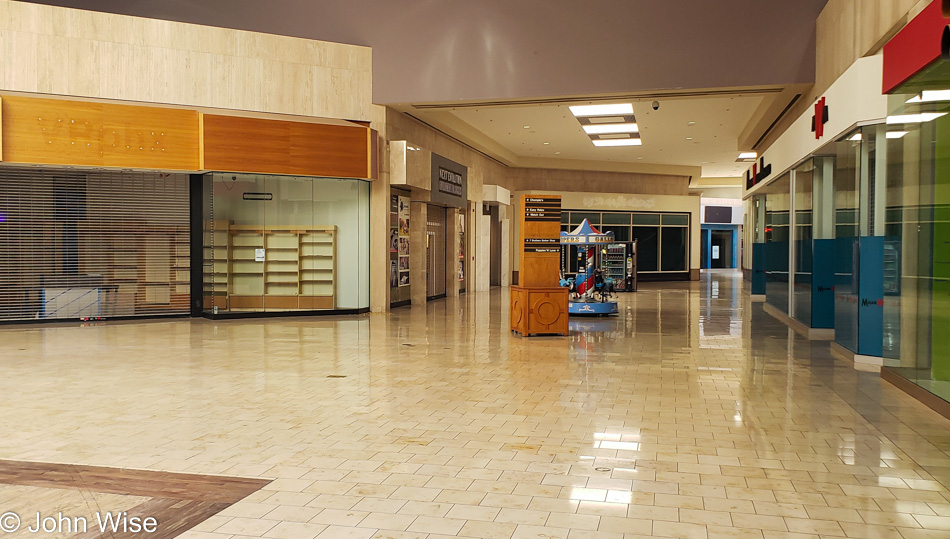
We recently finished watching the Adam Curtis documentary titled Can’t Get You Out of My Head. We almost quit halfway due to a bunch of perceived loose ends that we feared could not be resolved, but we persevered. The six-part series starts off exploring some coincidences that connect various events in our global history over the past 80 years. If it weren’t for this being a recommendation from a trusted friend, I would have given up. There were moments when it felt that the tangents were too tenuous to ever be stitched together in a meaningful way.
This should not have been said with any hint of certainty because in the eighth hour, it all came together for me, and while I never enjoy reading about spoilers, here I am about to do just that. Of course, I can claim this is for my own edification as the number of people who read these missives is small enough that the random chance that I ruin this series for anyone seems infinitesimally small. With that being said, do not read further if you don’t want my half-witted analysis of the documentary before you watch it for yourself.
Part 1 begins by looking at cultural changes that are unfolding on the post-World War II global stage and how politics and power are shifting with the times. We learn of Jiang Qing, who was Mao Zedong’s wife, and how she wanted to perceive herself in a man’s world and how she would set forces into play that would affect the communist state to this day. As the filmmaker takes us on a journey through the evolving world of China, we learn of Ethel Lillian Voynich, who wrote The Gadfly, which was carried around by millions of youth in the communist block. She was the daughter of George Boole, who gave us Boolean logic regarding her married name of Voynich; she was married to Wilfrid Voynich, owner of the famous eponymous manuscript. What’s happening in the documentary (unbeknownst to me at the time) was the role stories play in moving society.
This is ironic as it was just a few weeks earlier that I learned of Jemma Rowan Deer, Ph.D., who had recently published her first book titled Radical Animism, which talks about the role of storytelling in shaping the narratives that influence the direction of humanity, specifically her desire to inspire others to communicate stories that will help protect the environment. With her endeavor ending up as a textbook, it was priced a bit too high for me to delve into, which was compounded by the fact that this is the author’s first commercial effort. So I wrote her, and to my surprise, she sent me a PDF of the book for free. I’m yet to begin reading it as I’m trying to finish a book about the 17th-century French priest and philosopher Nicolas Malebranche first, but that’s another story.
Continuing with Can’t Get You Out of My Head, the filmmaker in part 2 looks at violence, from both protesters and those in power, to affect social change and how these efforts have proven futile. Part 3 pulls back the veil on how money and conspiracy play their parts. Conspiracy and uncertainty are themes that run throughout the series, so I shouldn’t imply that this is specific to part 3, but it was here that I started feeling this was swinging too deeply into conspiracy, and I considered giving up. What kept me going was the thread Adam Curtis was weaving that kept returning to the dissatisfaction and anxiety permeating societies around the earth.
In part 4, we start looking at the psychology of those who are being controlled by the power of governments and politicians. Let me note that finding complete copies of parts 4, 5, and 6 is currently quite difficult due to content that is in dispute with various copyright holders, and even the edited versions you are likely to find are typically of inferior quality. Now with more than four hours invested in the series, we’d slog through the rest regardless if we get dropped off in utter frustration that the work goes nowhere other than posing some questions after observing a bunch of interesting coincidences.
On to part 5 and a look at the “Lordly Ones,” the controllers in the shadows who enjoy their privilege but are afraid that if the masses understood the exploitation and fear that was dictating their situations, they’d rebel. Society around the world is in decay, and all the consumption and attempts to pacify populations appear to end in failure; maybe computers and artificial intelligence can preserve order.
Systems of information play a large role in part 6. Everyone is telling or selling a story, and we’ll come to understand by the end of the series that humanity cannot entrust the mechanics of order to a select group of corruptible power brokers but that the mass of people has to take a role in creating the stories that might influence better personal outcomes. Flirting with nationalism (due to lack of imagination to see better futures) is the least desirable path and not an inevitable way we must follow, and while Adam Curtis offers a glimmer of hope that we might choose a better direction, the haunting notion of a totalitarian society is lurking right within sight.
So, while not exactly an uplifting 8 hours invested in this bit of entertainment, the idea of storytelling being the central pivot point of what directs humanity certainly resonates with me. This then asks the question, when we continue to fail at creating our own fulfilling vision of life, who do we accept as being our storytellers when we are consumed by a steady offering of horror and fear?







